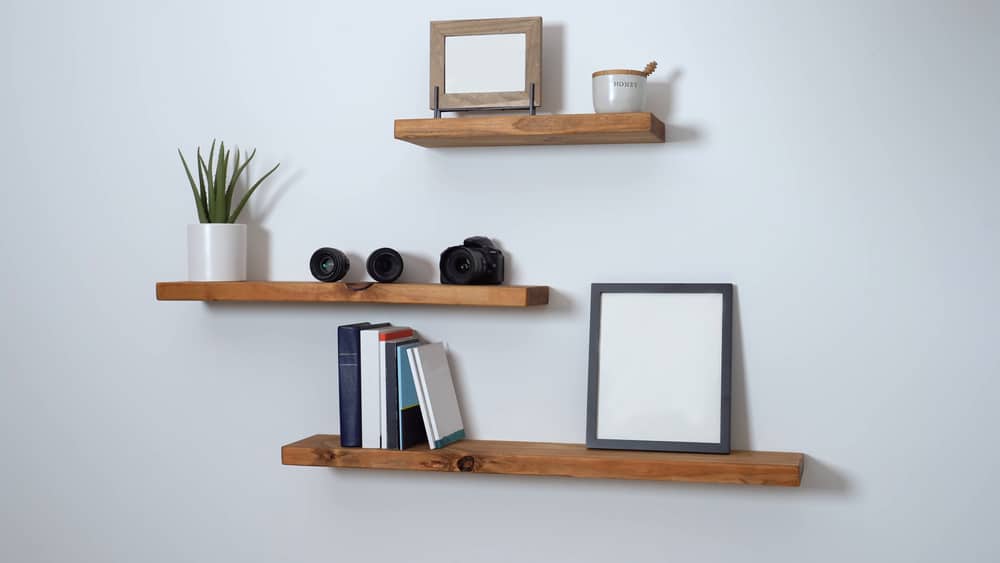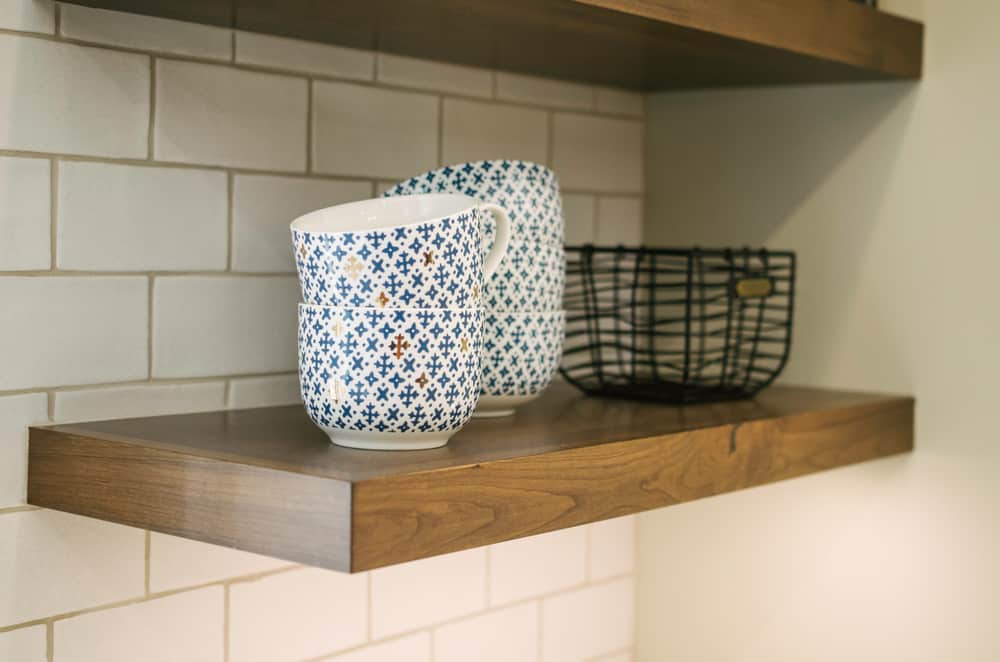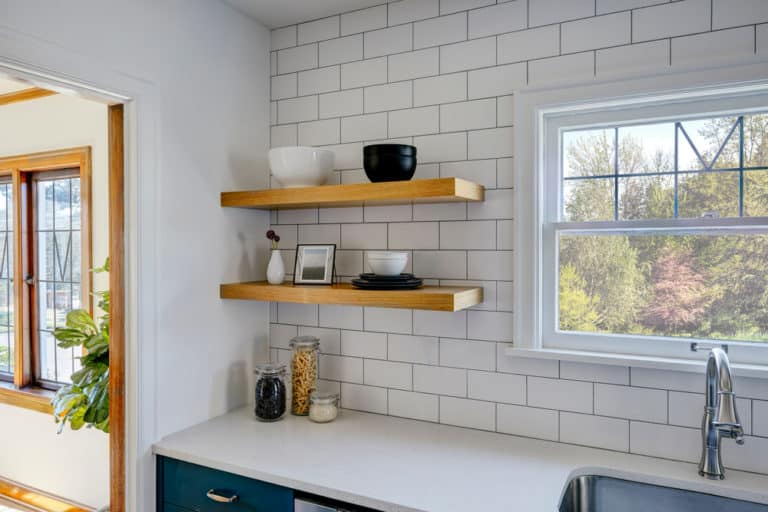How Thick Should Wood Be for Floating Shelves?
Floating shelves are a classic for homeowners who want to spice up their spaces; they’re cheap, easy to install, and easy to maintain. The best part of floating shelves is how easily they can be incorporated into a room and complete the look. The question now is how thick the wood should be for a sturdy floating shelf?
The thickness of the wood should be around 2”. This thickness will make your floating shelf sturdy without looking too bulky. Aside from thickness, you also need to consider the type of wood that you are using and to make sure that it’s good for us.
Aside from thickness, there are also other things about shelves that you need to know about to ensure you’re getting the best shelf you can for your room. You can also opt to explore other materials as well as offer other design options. Shelves should also be a certain measurement for them to hold stuff up properly, the last thing you would want is a shelf with too much or too little depth.
Wood Thickness for Floating Shelves
As mentioned in our answer, the ideal thickness for a floating wooden shelf would be 2 inches. Anything less, and there’s a higher possibility that your shelf may snap when loaded with objects. Note also that it’s assumed that the wood you are using is made out of hardwood.
The following types of wood will work well with a floating shelf:
- Oak
- Pine
- Mahogany
- Solid Walnut
- Maple
If you’re not too particular with the material and just want to get straight into installing a floating wooden shelf, what you can opt to do instead is to buy straight from a manufacturer. DIY stores tend to have already wooden boards made specifically for floating shelves. These boards are already cut to a standard size, finish to last and for design, have an indicated weight capacity, and are ready for installation immediately.
What is a Floating Shelf
A floating shelf, as the name implies, is a shelf without any visible supports. This is the defining characteristic of floating shelves as they give a minimalist look and can easily be added to any wall. Floating shelves can either be solid or hollow, depending on what you need out of it. The great part is thgn you can easily change/move it around to fit your r because of its simple designoom.
Usually, floating shelves are made out of wood, because of how easy it is to work with, but they can also be made with other materials such as steel, metal, and can even be built into the wall with concrete. Changing up the materials allows you to work with all kinds of finishes, giving homeowners an endless variety of options for how the design of their shelf.
Design for floating shelf
In this section of the article, we’ll briefly cover the designs for floating shelves and their implications.
For floating shelves, it’s expected that they won’t be able to bear as much weight as compared to regularly supported shelves, primarily because there are fewer supports and also because of how the shelf is supported. With that, most floating shelves often handle a total weight of anywhere between 10-50 pounds, depending on how you fasten the shelf to your wall and the wood that’s used.
Another factor that homeowners need to consider is that floating shelves definitely look nicer and give a cleaner look but also offer less practicality. Since the depth of a floating shelf is a lot smaller than a regular shelf, there will be less space to place items on. Another issue with floating shelves is that it’s easier for items to fall out, especially round objects.
This is not to say that you can’t use floating shelves for storing things. You can add a few additional designs, such as putting up rails along the edges of the shelf to better secure objects. If you need more space, it’s better to increase the length of the floating shelf rather than its depth.
With that, it’s much more common for homeowners to use floating shelves as a place to put decorations to complement a room. Objects such as plants, family pictures, figurines, clocks, etc., will look fantastic on a floating shelf.

How is a floating shelf installed?
Floating shelves are installed in two parts, you have to prepare the shelf itself and the wall for installation. There is no one right way of doing this because of how simple the construction and easy it is to make a shelf “float”; it usually depends primarily on the type of wall that you have as this will determine how you’ll need to adjust your shelf to fasten it to the wall properly.
The first step to installing a wooden floating shelf is by mounting a shelf bracket on to your wall. A typical shelf bracket for floating shelves will have protruding pegs which are meant to be inserted into your shelf.
Once the shelf bracket is mounted, you can then cut in the holes needed into the shelf itself. Make sure to match the shape and size of the pegs so that they can snugly fit into your shelf. From there, simply slide in the shelf onto the shelf bracket.
To make your floating shelf even sturdier and to avoid it getting pulled out. You can opt to nail the shelf onto your wall. It’s best to do this from underneath and at angle wherein the nail will penetrate both yourself and the wall, pin nails(which are usually used in trim) are great for this!
Conclusion
Floating shelves are great for spicing up the look of your rooms. They offer a minimalist look and are great for displaying objects. They can easily be installed in a DIY and can be also easily customized. The wood for a floating shelf should be hardwood and at least 2 inches thick to make up for the lack of supports for it.


